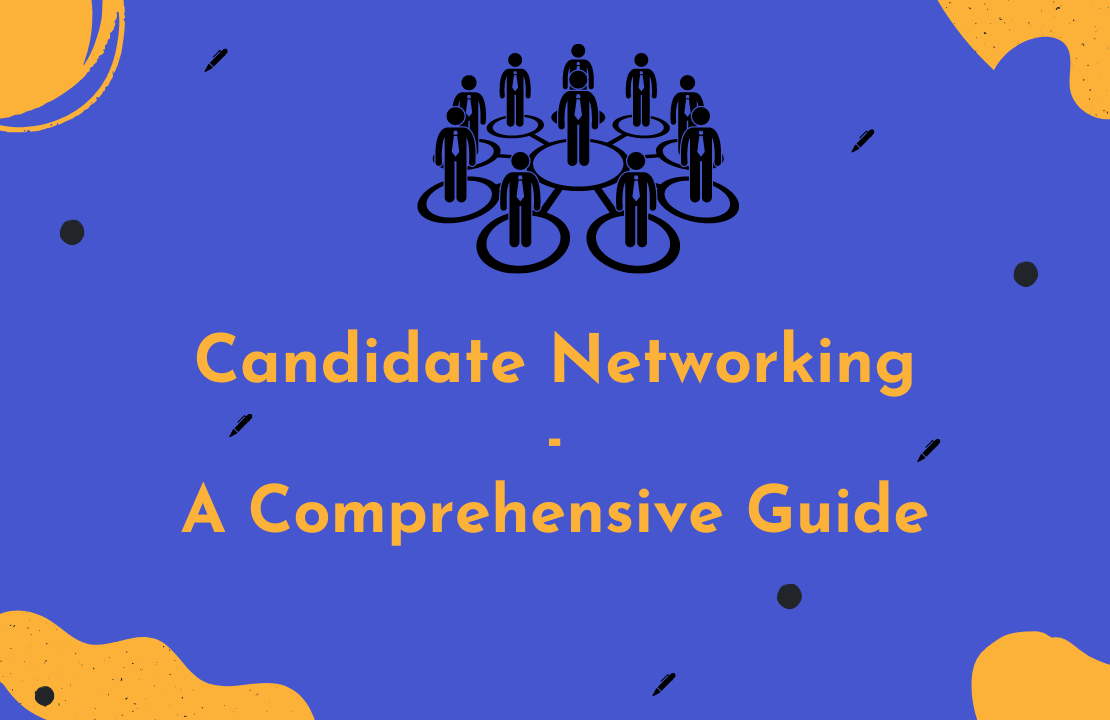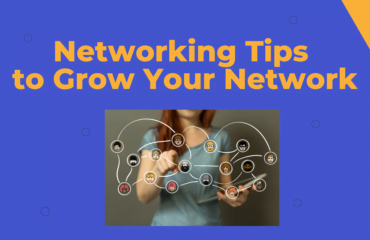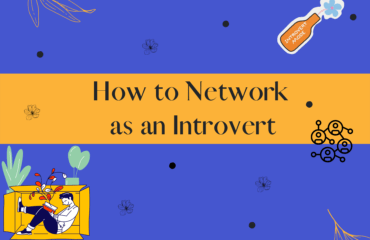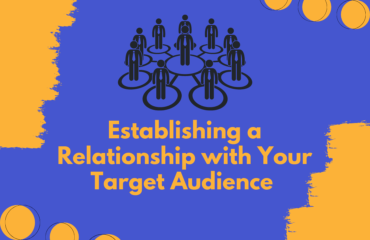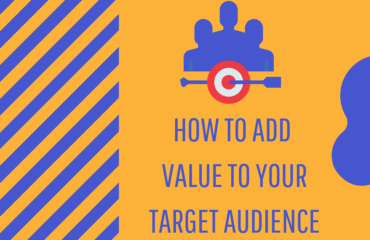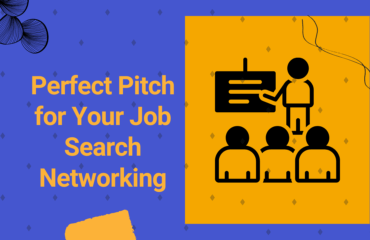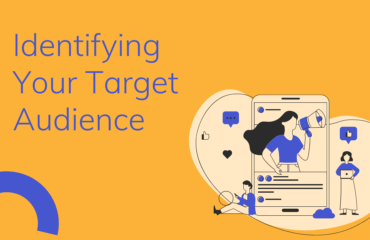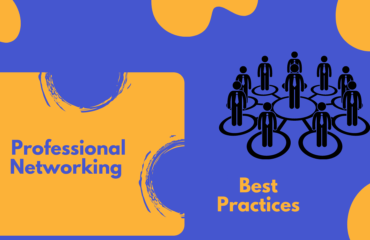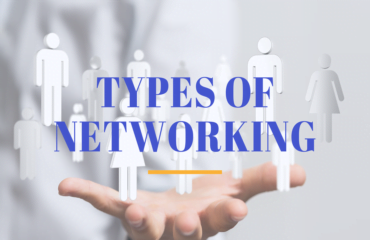Table of Contents
What is professional networking?
Professional networking is the art of establishing a relationship with people you think can help you reach your professional goals. It is a multi-step process that requires candidates to identify the relevant target audience, approach them, build a rapport, and seek support. It is a key tool in job search irrespective of the industry, function, or seniority. While conventional methods still dominate job searches, optimizing your professional networking strategy as a candidate can bring you extra value. If you are a candidate looking to switch careers, we recommend going through this guide to help you develop a strong networking strategy.
Why you should care
a) Developing mutually benefiting relationships
One of the biggest benefits of professional networking is that it helps you develop long-lasting, mutually benefiting relationships. Networking with the right people strengthens your connections, helping you create a stronger network and fulfill your career goals. Your connections are not only beneficial for your job search, but they can also be a huge support to you if you decide to go down a different path in the future.
b) Finding relevant jobs
The purpose of professional networking is to help you find your dream job. Connecting with relevant people increases your chances of learning about new opportunities that may or may not have been advertised yet. In some cases, your target audience may even connect you with other professionals with the right opportunity.
c) Obtaining valuable career advice
Networking is also a great source to obtain career advice from experts. For example, you are working in digital marketing but are looking to move to a role with a broader scope in marketing. You could connect with marketing professionals working in your target industry or company and build a relationship with them. This can develop a mentor-mentee relationship that can help you make informed decisions.
Finding your target audience
Your target audience plays an important role in your networking. The people you choose to network with will determine the success of your job search. By finding the right audience, you increase your chances of being referred to your target job. Additionally, it can help you learn more about your prospective employer’s culture, work environment, and work-life balance. So, it is essential for you to find your target audience based on your goals. Let’s see how you can do this below.
Scenario 1- You want to find out more about a job
Under this scenario, you are looking to connect with professionals who can help you learn more about a role, function, employer, or industry. It is the stage when you are exploring a potential career and are looking to learn more about it to make an informed decision. Some people that you can target with this objective are:
a) Alumni and current employees
Alumni and current employees are a great source to know about your prospective employer. They give you a holistic picture of how things operate, letting you know if they are a good fit based on your interests and experience. Such informational interviews help you get first-hand knowledge about the culture, perks, and challenges of working in a particular company. This can further aid you to make a well-thought decision.
b) Industry experts
Another set of people that can help you learn about any industry is its experts. Industry experts are leaders or influential people who can provide you with insightful information and trusted opinions. This could include insights on industry benefits, challenges, trends, and changes. It allows you to understand if working in your target industry would align with your interests and requirements.
Scenario 2- You want a job
Once you have finalized your target jobs, you should reach out to people who can help you find them. This helps you speed up your job search. Moreover, it enables you to gain a competitive edge over your competition. Some people that you can contact are:
a) Recruiters
When looking for a job, you should start by connecting with recruiters hiring in your desired industry and company. This allows you to create a strong first impression and stand out from the crowd. Reaching out personally in a polite and professional manner helps them remember you, enhancing your chances of being considered for the role.
b) Recruitment agencies
Recruitment agencies are organizations that assist companies to fill out their vacancies. Thus, they can be a great tool to support your job search by helping you get in touch with potential employers and speed up your job search. You can either register with recruitment agencies online by filling out their forms and submitting your CV or go and meet them in person in an office near you. Once you have gotten in touch with them, focus on developing a relationship to help them remember you personally. Follow up regularly and keep them posted on your job situation, informing them of any current changes.
c) Hiring managers
It is the hiring managers that you are ultimately going to work with. Connecting with them can support you in multiple ways. If they like your profile and experience, they may consider you for an open vacancy in their team. In case there are no vacancies, you’ll be at the top of their mind and may reach out to you when a new role opens up. . This will help you get a competitive edge when you make an official application for your desired position.
d) Business leaders
Networking with business leaders is another great opportunity that can bring you closer to your dream job. Business leaders are experienced and usually have a good eye for the ‘right employee’. If you create a rapport with them, your chances to land your dream role may skyrocket. They may recommend you to recruiters and respective hiring managers. While networking with business leaders may require extra time, effort, and patience, it can help you reach your goals greatly.
Online networking
Online networking refers to networking through online channels, such as social media. It is considered to be quick and low-cost. If you are a networking newbie, online networking is worth considering. Once you have gained some experience with it, you can move to offline networking.
Identifying your target audience
After narrowing down the category of people to reach out to based on your goals, start identifying sources to find the right people. The Internet is a huge space and it is easy to get lost. So, we recommend choosing two to four online platforms and focusing on them. Before deciding what platforms to use, do a little research and choose the ones that are most popular among employers. Some professional networking platforms that you can try are:
While professional platforms are quite popular, employers have also started exploring personal social networking sites to find the right talent. Thus, candidates should keep an eye on their personal social media profiles too. We encourage you to keep your profile employer-friendly by staying away from any controversial discussions and posts. Some personal social media platforms that you can use to connect with potential employers are:
- TikTok
- YouTube
Managing your personal brand
Your personal brand is others’ impression of you based on your experience, expertise, interests, and skills. It plays a key role in how people recognize you. Thus, it is a crucial part of your networking strategy. If you have an established personal brand, half your work is done. It helps you to communicate a unique identity and clear value to potential employers. In today’s increasingly digital world, a personal brand is no longer a nice-to-have, it is expected.
Your personal brand can be reflected on your website, personal blog, LinkedIn profile, and even career documents. It could include anything from a slogan to an image, or a color. For example, your LinkedIn profile headline says, “I help professionals market their products and services in a cost and time-efficient manner”. That’s your brand! This is how you sell yourself to potential employers. You can use the same words on your website and career documents to maintain uniformity. Another important way of developing a personal brand is by creating relevant content on LinkedIn. Let’s see how you can do this in the next part.
Creating, curating, and engaging with content
Personal brand and content creation go hand-in-hand. Content creation is one of the most cost-effective and convenient ways to create a strong personal brand. It doesn’t require any setup cost, is location-independent, and connects people. Hence, it plays a key role in your online networking strategy. Furthermore, it creates a strong impression on recruiters when they come across your LinkedIn profile. Let’s see how you can capitalize on content to enhance your online networking strategy.
a) Creating content– To create relevant content on LinkedIn, you should begin by exploring the topics of your interest. Once you have narrowed down the content topics that you want to work on, start thinking about other factors like its length and media type. Then, start producing and posting content on a regular basis.
b) Curating content– Curating content is another good way to establish a relationship. This is a form of content creation where you share content from others that ties into you and your audience’s interests. . It would involve researching, organizing content, and presenting it with your opinions. Curating content is an efficient way to gain visibility and initiate discussions.
c) Engaging with content– Lastly, engaging with your target audience’s content can help them remember you even before you reach out to them directly. So make sure to like, comment on, and share their content to develop a relationship. However, stay away from adding generic comments and sharing their posts unnecessarily with no input from your end.
Adopting a giving mindset
The ‘rule of reciprocity’ allows people to give back to others. This holds true in your networking process too. It increases your chances of receiving a reply from your connections while also portraying a strong interest in developing a relationship. So even before you seek help from your target audience, think about how you can add value to them. Some ways of doing so include:
a) Showing interest in your connection’s content
Imagine yourself being a content creator. Now, what can help you the most? Engagement, right? Likes, comments, and shares are a great way to receive validation. So if your target audience is content creators, you can engage with their posts regularly and add value to them by showing your support.
b) Helping them connect with relevant people from your network
Once you have developed a relationship with your target audience, it may be easier for you to identify their needs to help them reach their goals. For example, if you have spoken to a recruiter who is looking to fill multiple vacancies, you may help them find a relevant candidate from your network. This way, you don’t only connect two potential parties with mutually benefiting goals but also strengthen your relationship with each of them. This can help you in the long run.
c) Support with your expertise
In some cases, your target audience may appreciate support in form of advice/suggestions based on your expertise. For example, you have experience working in email marketing and you see your target audience posting about it seeking help. If it is a post, you can respond to it directly in the comments. However, if it is a comment on someone else’s post, you can simply message them and let them know that you came across their query and would be happy to provide some insights. Make sure your recommendations are in an easy-to-understand language and wait for them to get back to you.
Reaching out to your audience
The next step is to connect with your target audience. While this may seem simple, it is essential to mind a couple of things, ensuring you create a good impression on them. Before sending them a connection request, be clear about your objective. This will help you formulate the right message for them. Additionally, research your target audience in advance. To do so, you can:
- Go through their LinkedIn profile.
- Do a Google search in their name to find relevant professional information.
- If you have a mutual connection, you can speak to them about your target audience and learn more about their background. Moreover, you can check with the mutual connection, if they would be happy to introduce you to them.
Make sure to reach out to your target audience on a platform that they are active on. For example, if they are active on Medium, you can comment on their posts or drop them a personal message. This will increase their chances of responding to you. However, if you find they already have a lot of engagement on Medium, it may decrease the chances of them viewing your comment or messages. So in this case, dropping them a personal message on LinkedIn could be a better idea. Some platforms that you can use to reach out to them are:
- Medium
- Quora
Furthermore, you can use the following template to be added to their network.
Hi <first name>,
My name is <your name>, and I came across your profile on LinkedIn. I noticed your valuable contribution to <add content> and have been following your content for quite some time. I have previously worked in this domain and would love to connect with you and learn more about your work/role.
Thanks,
<Your name>
Requesting a meeting
An unclear meeting request may be perceived as a sales call. Hence, your communications need to be targeted and clear. Make sure your messages are grammatically correct, well-written, and convey your objective. When you request a meeting, offer them the option to suggest favorable timings. If they want you to suggest times, provide a couple of time slots. This will make it easier for both parties to decide on a convenient time. You can use the following template to set the right tone for your message.
Hi <First name>,
Hope you are doing well,
I enjoyed our previous conversation on <a topic from your previous conversation>. I was wondering if we could meet in person and discuss more <a topic of interest> and your current role. Since I am interested in working in a similar profile, your insights will help me make an informed decision.
We can meet at a place of your convenience and time. Please let me know if this suits you well. I am looking forward to speaking with you in person.
Thanks,
<Your name>
Preparing for a meeting
Creating a strong impression in an online meeting can be challenging. You don’t only have to make yourself look and sound presentable but also ensure everything is working fine technically. This could include your internet connection, video calling app, or even your headsets. So it is imperative that you think about all the scenarios that may hinder your meeting and prepare well for them. Let’s see some tips below.
- Be prepared with all the content you want to discuss. This may include your reason for requesting the meeting and your respective professional backgrounds. Career-related topics such as how to transition into your target industry, and tips and tricks on getting a job in your target field are also good topics for discussion
- Check your internet connection and headsets beforehand.
- Make sure to open the video calling link 10-15 minutes before the actual time so that you have enough time to fix any issues.
- Prepare some questions to ask your target audience. You don’t want to look uninterested while speaking to them. So be ready with some questions about their work, projects, and professional history.
- Tidy up your surroundings in advance. If you are planning to blur your background in the video calling app, make sure you know how to do it before the meeting begins.
Nurturing your relationships
What happens after you have attended your meeting with the target audience? Well, for starters, if you don’t follow up and reconnect regularly, they will forget about you. Thus, it is essential to nurture these new relationships by keeping in touch. First of all, if you decide on any next steps during your meeting, make sure to follow them. If your meeting ended with no further actions, make it a point to touch base with them regularly.
Additionally, you can re-connect by seeking direct help. This will establish a mentor-mentee relationship between you and them. For example, if your connection is a content writer, you could check with them the average number of words they write per article to align with SEO best practices. In fact, to make it easier, give them options. This will increase their chances of responding. Implement their answer and let them know the results in a couple of weeks. It will create a good impression on them, motivating them to support you further.
Offline networking
Offline networking refers to connecting with people and building rapport via offline channels, such as in-person events. This requires a personal touch and often takes more time and effort than online networking. That said, this is an untapped territory for many and can take you closer to your goals. In this section, let’s discuss how you can network offline efficiently.
Identifying relevant events
To identify relevant professionals, the first step is to identify the right events for you. We suggest doing this based on location, demographics, industry, and experience level. For example, if you are a mid-career finance professional, attending an event organized specifically for early-career marketing graduates wouldn’t add benefit to you. So it is essential to attend events with the highest potential to add value to you. Let’s see below some sources to identify relevant events.
a) Google Search
The best way for the organizers to advertise their events is by posting them online. While the results could direct you to different platforms, Google search provides you with broader options. Some search ideas that you can use are ‘offline networking events around me’ or ‘networking events around me’. If you are looking to attend industry-specific events, add that to your search query. For example, ‘marketing networking events around me’. This will give you a list of all relevant events around you.
b) LinkedIn
Similar to the Google search, a LinkedIn search is also a good way to identify networking events. While the results may not be as diverse as Google’s, you may still be able to identify some groups and communities that hold regular networking events. You can get added to these groups to learn about the opportunities as soon as they are posted.
c) Event management companies
Another great way of identifying events around you is by checking out event management companies. Eventbrite, Eventique, and TicketMaster are some examples. They list all events happening around you, giving you a wide variety of options to choose from. You can select events based on location, domain, or demographics.
d) Alumni Meetings
Alumni meetings are a great way to catch up with professionals from different domains and sectors. Sharing a common educational background also motivates people to be more receptive to such relationships. We suggest keeping in touch with the alumni team of your alma mater and attending events when feasible.
e) Company Events
Company events are another great source of meeting professionals with diverse backgrounds. These allow you to not only meet colleagues from different departments but also extend your reach to professionals outside the organization. Additionally, it may increase your chances of learning about internal vacancies that may add significant value to your career.
Researching your audience
Before attending an event, make sure to do your homework. Do some research about the event and the people who may be attending it. This will give your offline networking a head-start. By researching the people attending the event, you will get an idea of their professional background, industry, and experience. This information will allow you to prepare your conversations and questions accordingly. Some sources that you can use to identify the people attending the event are:
- Event’s LinkedIn page
- Event’s marketing material, such as brochures and pamphlets
- Event’s website
- Organizers and their social media pages
Once you know who all are attending the event, you can use the below-mentioned resources to find information about them.
- Their LinkedIn profile
- Google search in their name
- The ‘Team’ page of their current employer’s website
Creating your elevator pitch
In online networking, you may have some time to think and respond to messages, but things work differently for offline networking. You may only have one chance with your target professional. Thus, it is essential to be prepared with a networking/elevator pitch before attending an offline networking event. It allows you to introduce yourself briefly, highlighting all your USPs. It conveys your capabilities, achievements, and unique experiences that help you stand out from the crowd. In short, it helps you sell yourself as a professional. A networking pitch should be:
- Concise
- Informative
- Persuasive
- Engaging
You can begin your pitch by introducing yourself. Keep this to the point and focus only on the most relevant aspects, such as your current role. Post that, move to your intention of speaking with the target professional. This is where your research can add value to you. Explain to them how their experience can help you attain your goals and close this with a call to action. This could be feedback or a short meeting later, depending on your goal. You can create a ‘master pitch’ that you can personalize based on the person’s experience and what you want to achieve with their support.
Reaching out to your audience
Reaching out to an offline audience requires being physically present and talking to them face to face. This makes it challenging for some people. To create a strong impression, everything has to be professional, from establishing the initial contact to exiting the conversation.
Once the event has started, think about all the people you’ve researched. Start approaching them one at a time and introduce yourself. Exchange greetings, build a rapport and deliver your networking pitch to them. Take charge of your conversation and see where it takes you. However, be alert for exit cues. If you feel it is time to move on to someone else, exit the conversation gracefully and look for other people to network with.
Adding value to your audience
Irrespective of the networking type, having a giving mindset is essential to developing a relationship with someone. Right from the start, think about how you can support your target professionals. Your initial research on them can help you identify ways to add back value. For example, if you come across their books or podcasts that align with your interests, you can give them a try. This way you can offer some feedback or insights when you meet them in person. It will also be a great way to keep a conversation going. Additionally, it will increase their chances of remembering you from the event.
Once you have met a couple of people at the event, you can introduce them to each other based on their goals. For example, if you meet someone who is looking to speak with a technical recruiter and you have already spoken to one at the event, you could let them know. This could even result in more people trying to support you in your job search.
Following up with your audience
You may meet a lot of people at the networking event. Many of them would be happy to speak with you and even discuss common interests. But none of it would benefit you if you don’t connect with them afterward. We recommend asking for contact details or their business cards and letting them know that you would love to connect with them later. After the event, go on LinkedIn, search for them, and send them a personalized connection request. Drop them a message about how you had a nice time speaking with them. Make this a routine and keep checking with them regularly to keep your relationship going.
Professional networking resources
In this section, let’s have a look at some tools that can make your professional networking process smooth and convenient.
a) Appointment tools
Speaking to many people can be hectic, especially if gradually start interacting with more professionals on a regular basis. To optimize your networking strategy, we recommend keeping a target of speaking to X number of people based on your availability and schedule. To help you set up and manage your meetings smoothly, you can use an appointment tool. It will allow you to communicate with your target audience conveniently and send all parties reminders before the meetings. Some tools that you can consider using are:
b) Note-taking tools
In most cases, your meetings will be informative and insightful. Thus, be prepared to take some notes down throughout your meetings. While taking notes is essential at the moment, it is also important for you to be able to make sense of them later on. So we wouldn’t recommend using a pen and paper. Instead, we suggest having a look at the below-mentioned apps and choosing the one that works best for you.
c) Personal CRM tools
A Customer Relationship Management tool helps professionals and businesses to manage their relationships with customers and clients. Similarly, personal CRM tools help individuals to manage their relationships with their network. Since networking is an ongoing process, we suggest using one reliable personal CRM tool to record and analyze information. It will also save you from using multiple other tools for different purposes. A personal CRM helps you:
- Maintain records
- Save time
- Analyze data to help make informed decisions
- Set meeting reminders
- Organize networking activities
- Enhance efficiency
Some personal CRM tools that you can choose are:
Professional networking has proved to be a useful job search tool. Apart from introducing candidates to new opportunities, it builds and enhances their personal brand and allows them to seek career advice from industry experts. We strongly recommend you develop a networking strategy irrespective of whether you are actively looking for a job or not. Having a strong network adds value to you in the long run.
References
2) University of California, Berkeley. Informational Interviewing. Available at: https://career.berkeley.edu/Info/InfoInterview#benefits
3) CareerHigher, 2021. Getting a Job through a Recruitment Agency. Available at: https://www.careerhigher.co/career-advice/getting-a-job-through-a-recruitment-agency-124861/
4) CareerHigher, 2021. How to Create Engaging Content on LinkedIn. Available at: https://www.careerhigher.co/career-advice/how-to-create-engaging-content-on-linkedin-123572/
5) Psychology Today, 2015. Honoring the Rule of Reciprocation. Available at: https://www.psychologytoday.com/us/blog/stronger-the-broken-places/201510/honoring-the-rule-reciprocation
6) CareerHigher, 2021. Professional Networking Outreach Templates. Available at: https://www.careerhigher.co/career-advice/templates-to-request-a-networking-meeting-125141/
7) CareerHigher, 2021. Templates to Request a Networking Meeting. Available at: https://www.careerhigher.co/career-advice/templates-to-request-a-networking-meeting-125141/
8) CareerHigher, 2021. What to Discuss in a Professional Networking Meeting. Available at: https://www.careerhigher.co/career-advice/what-to-discuss-in-a-professional-networking-meeting-122935/
9) CareerHigher, 2021. How to Create a Perfect Networking Pitch. Available at: https://www.careerhigher.co/career-advice/job-search-networking-pitch-124279/
10) CareerHigher, 2021. Optimizing Offline Networking in Your Job Search. Available at: https://www.careerhigher.co/career-advice/optimizing-offline-networking-in-your-job-search-124383/
